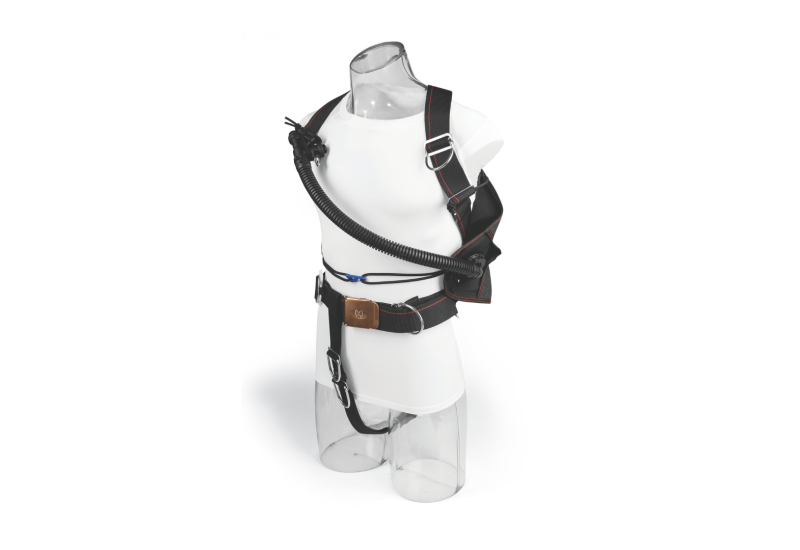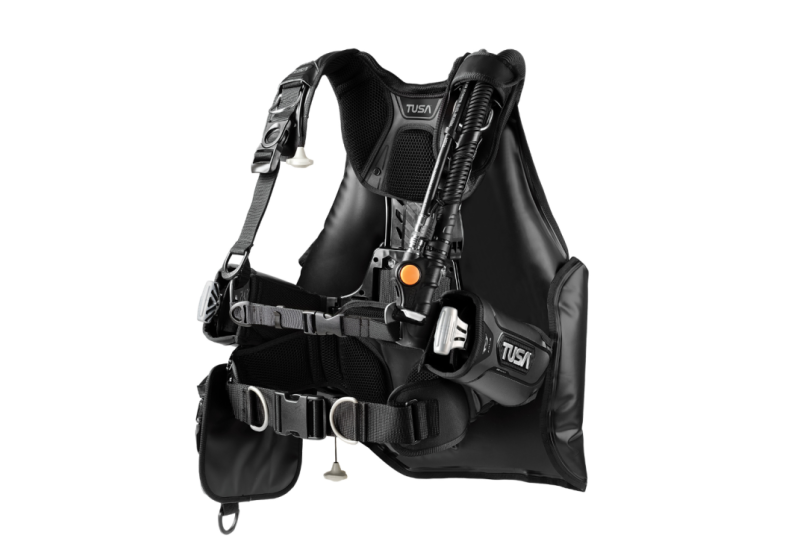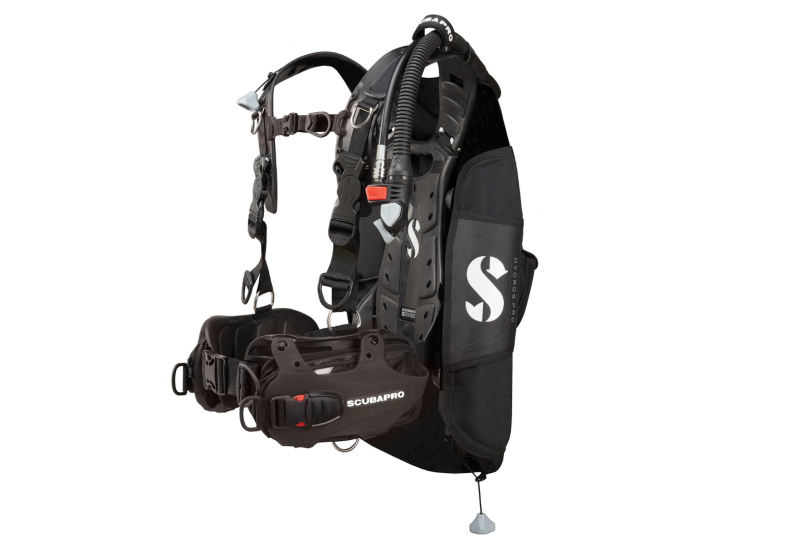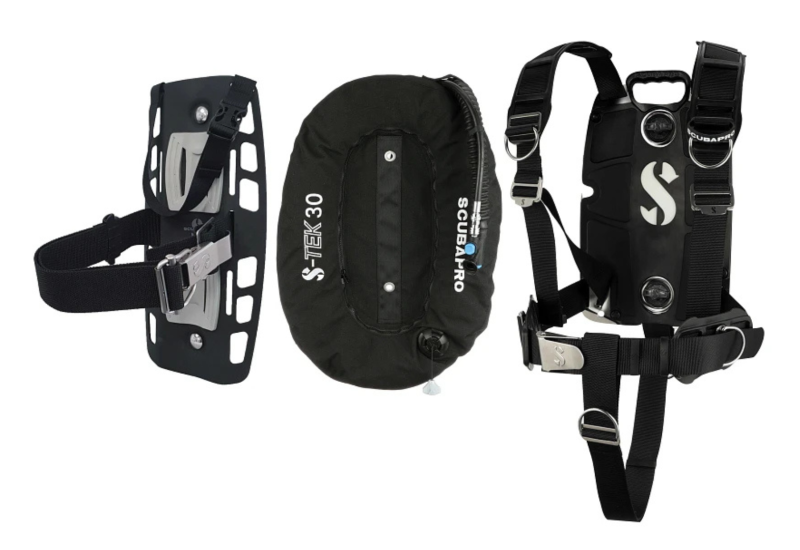ScubaLab: 2011 BC Tests

Carrie Garcia
SCUBALAB: BC TESTS 2011
Text by Floyd Devine, Test Team Supervisor
Photos by Carrie Garcia and Katy Danca Galli
For the individual reviews of each BC, see the “Related Articles” at the bottom of the page.
Innovation in the dive industry is alive and well, as our call for new BCs this year was answered with a diverse collection of products incorporating new materials and features. In all, we tested nine new systems — six jacket-style and three back buoyancy — as well as taking a quick look at two single-tank tec systems. ScubaLab tests BCs based on a three-phase regimen, with this year’s final evaluation conducted drift diving among the sea turtles of Palm Beach, Florida, off the dive boat Narcosis. Here’s how this year’s class stacked up.
Behind the Scenes: How We Tested the BCs
Arguably the most under-appreciated piece of dive gear, the modern BC forms the core of a complete dive system — it secures the cylinders, holds and distributes the diver’s ballast (weight), controls ascent and descent rates, supports the diver at the surface, and provides storage and attachment points for a variety of dive accessories. As with anything people wear, it’s tough to find a single solution that meets everyone’s needs, but this year’s newest BCs cover the spectrum of price, performance and features. With a variety of BC styles finding their way into the market, both individual divers and dive centers will find something that comfortably fits both them and their budgets.
TESTING PROCEDURES
Dry Testing
To prepare for objective and real-world testing, each BC is unpacked and assembled, tested for fit, and strapped to a cylinder. Everything from D-rings to integrated weight pockets are examined and tested for proper fit and operation. To become familiar with the equipment, owner’s manuals are reviewed and the manufacturer’s website searched for additional information. Once we’re satisfied, the BCs are taken to the pool for the second phase of testing.To see the BC features chart, click here.
Objective Testing
Our objective-test procedure is designed to verify three important physical and operational aspects of the BC: inherent buoyancy, buoyant lift, and inflator and valve flow rate tests.
1. Inherent Buoyancy
This simple test is designed to measure the closed empty buoyancy of the BC in pounds. The BC is floated in a pool with all straps closed to minimize water displacement; all air is then vented and weights added to make the BC hover in the center of the water column. BCs with more inherent buoyancy mean the diver must theoretically add more weight to compensate and achieve neutral buoyancy. For this test, lower inherent buoyancy is better for the diver since he would need to carry less weight.
2. Buoyant Lift
This test verifies the manufacturer’s buoyant-lift claims. The BC is placed in the pool, buckled around a neutrally buoyant bucket and inflated to its maximum dimension (valves automatically pop open). Weight is added into the bucket until the BC submerges and achieves neutral buoyancy by hovering in the middle of the water column. A variation of more than 20 percent is considered outside acceptable limits, particularly if the BC has less lift than claimed by the manufacturer.
3. Flow Rate Tests
This test simulates a “stuck” inflator button to see if the BC’s valves are capable of venting air at a rate fast enough to match out-of-control inflation. The BC is assembled as part of a negatively buoyant dive system and placed on the bottom of the pool in a heads-up position with the bladder empty. The inflation button is depressed while simultaneously operating each of the deflation valves in turn for a minimum of 20 seconds. All of the BCs tested had at least one valve that could keep pace with the constant inflation, meeting the industry standard.
To read an article on the latest integrated-weight systems for BCs, click here.
INDIVIDUAL REGULATOR REVIEW SCORING
Performance Summary
We’ve included a graph, like the one seen on the right, with each indiviual BC review shown below in the "Related Articles." The graphs give you an overview of each BC's best (as well as least positive) ergonomic characteristics, so you can compare them at a glance. In the individual reviews, ScubaLab evaluates the ergonomics of each BC in eight areas, divided into three categories: Most Important, Moderately Important and Minimally Important.
ERGONOMIC TESTING
For ergonomic testing, our team of 11 divers spent two days in Palm Beach, Florida, diving with Narcosis Dive Charters. Divers rated each BC in the eight testing areas (see below), and the BCs were scored on a 1 to 5 scale for each area of performance. Testers recorded specific observations and comments following each dive.
Most Important Ascent Control
An evaluation of how easily the BC can be used to control a normal ascent.
Attitude and Stability
While swimming underwater, can the BC keep the diver in the proper swimming position without wobbling?
Moderately Important
Valve Operation
The ease with which a diver can find and use the oral and power inflators, the oral deflate held overhead, the pull dump and the remote exhaust valve(s).
Comfort and Adjustment
Checked both in and out of the water with BC strapped to a tank.
Weight Ditching
An evaluation of how easy or difficult it is to ditch weights in a simulated emergency situation.
Minimally Important Assembly
Performed on deck without instructions. (Although BCs should be supplied with clear and complete instructions, most divers won’t take the instructions with them on the boat.)
Weight Loading
An evaluation of how easy or difficult it is for a diver to load weights and secure the system while wearing the BC.
Pockets
Tested in and out of the water, this is an evaluation of how easy or difficult it is to access and use pockets.
To see the objective and ergonomic testing scores for each BC, click here.
The Test Team
ScubaLab would like to thank: Capt. Van Blakeman and his crew for their professional and gracious hosting of the tests aboard the dive boat Narcosis. The test team, which included Tec Clark, Evan Culbertson, Floyd Devine, Katy Danca Galli, Scott Hiltsley, Kelly Levendorf, Ryan McClellan, Nikole Ordway, Erin Porter, Samantha Whitcraft and Marissa Wiganowske
The individual BC reviews are located in the "Related Articles" below.










